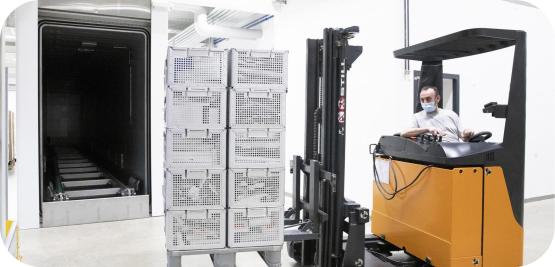(Download: Sterilization Validation: Patient Safety and Product Integrity in PDF by Medistri)
From surgical implants to prefilled syringes, the products that reach healthcare professionals must be sterile - not by assumption, but by evidence. That evidence is generated through a process known as sterilization validation.
What Is Sterilization Validation?
Sterilization validation is the formal process of proving that a specific sterilization method - whether it's ethylene oxide (EO), steam (moist heat), or radiation - is capable of consistently and effectively sterilizing a product or product family.
It involves demonstrating that the process achieves a Sterility Assurance Level (SAL) of 10⁻⁶, meaning there is less than a one in a million chance that a single viable microorganism remains on the product.
Why Sterilisation Validation Necessary?
- It’s a Legal Requirement: Regulatory authorities such as the FDA (U.S.), EMA (Europe), and notified bodies across the globe require validated sterilization before a product can be marketed and labeled as Sterile.
- It’s a Quality Standard: International norms, especially ISO standards (e.g., ISO 11135 for EO and ISO 17665 for steam), provide detailed guidance on how validation must be conducted.
- It Reduces Risk: Validation ensures the process is repeatable and that it consistently sterilizes the product - even under worst-case conditions.
- It Prevents Recalls: Inadequate or invalidated sterilization is a major cause of product recalls and patient safety incidents.
When Should You Validate?
Sterilization validation is required in the following scenarios:
- New product launch: Any product claiming to be sterile must undergo validation.
- Change in manufacturing site or sterilization facility.
- Change in packaging or product materials.
- Re-validation after a fixed time period or after deviation from the validated process.
- Change in sterilization load or configuration.
What Should Be Included in a Validation File?
- Protocol and rationale
- Test results (Bioburden, Endotoxin, Sterility, Residuals)
- Equipment calibration and qualifications
- Load configurations
- Certificates of analysis
- Final validation report
Sterilization Methods and Their Validation
Different sterilization methods require different validation strategies. Here’s a quick overview, EO remains the most versatile, especially for medical devices made of polymers or those with complex geometries and Type 1 Pharmaceutical Packaging - but it also requires the most rigorous control and documentation.
The EO Validation Process – Step by Step
- Protocol Development
Define scope, materials, packaging, and sterilization parameters. Establish test plans and acceptance criteria.
- Bioburden Assessment
Measure the natural microbial load on the product prior to sterilization.
- Process Challenge Devices (PCDs)
Prepare worst-case simulation units to assess the process’s lethality.
- Half-Cycles
Run the sterilization process at half the intended exposure time to demonstrate that even a reduced cycle achieves sterility.
- Full-Cycles
Validate that the full process delivers consistent SAL and complies with residual gas limits.
- Residual EO Testing
Measure ethylene oxide, ethylene chlorohydrin (ECH), and ethylene glycol (EG) to confirm safe levels, as per ISO 10993-7.
- Reporting & Approval
Compile results into a validation report. Submit to internal QA and/or regulatory authorities.
Sterilization Validation Isn’t a One-Time Task
Once validated, a process must be monitored routinely, with defined re-validation periods and change control protocols. Validation is not a project - it’s a system of assurance.
Sterilization validation is the foundation of delivering safe, sterile medical and pharmaceutical products. It bridges the gap between innovation and patient safety, between design and market readiness.
By approaching validation with the right expertise, discipline, and partners, companies can reduce risk, accelerate time to market, and ensure trust at every level—from the factory floor to the operating room.
Common Pitfalls in Sterilization Validation ?
- Using generic parameters: Validation must be tailored to the product and packaging.
- Inadequate sample size: Skimping on test units weakens the statistical significance.
- Poor documentation: Every step must be traceable and backed by data.
- Underestimating residue management: EO residuals can delay product release and introduce toxicological concerns.
Interested in launching a validation project?
Look for a partner that combines technical expertise, laboratory capabilities, and regulatory insight - all under one roof.
To initiate your validation project or learn more about our services, visit our website here or contact us at sales@medistri.com.
— The Medistri Team
#Medistri
